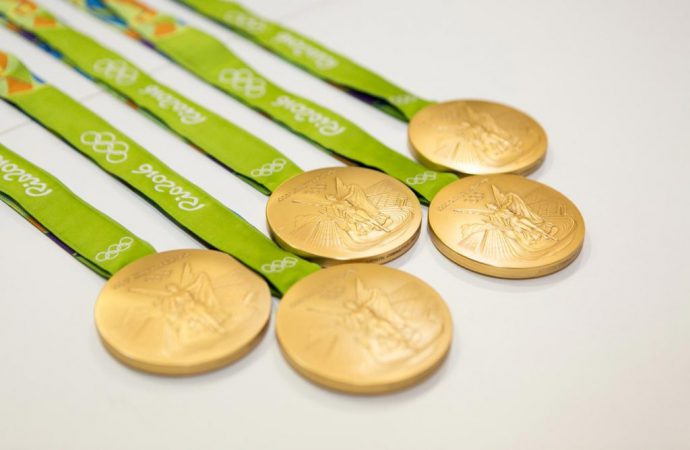Passively-designed venues, renewable energy and sustainable sourcing prioritised to make sure Olympics and Paralympics contribute to sustainable development goals
The organising team behind the Tokyo 2020 Olympic and Paralympics has calculated that the Games will have a lower carbon footprint than Rio 2016 and London 2012 – widely considered to be the first sustainable Olympics.
According to the second (and final) version of the Tokyo 2020 Sustainability Plan, the upcoming Games is expected to have a carbon footprint of 3.01 million t-CO2 (metric tonnes), compared with the 3.45 million t-CO2 emitted as a result of London 2012.
This has decreased further to 2.93 million t-CO2 following a venue review, which forced the organising committee to use existing facilities due to spiralling costs, reducing construction commitments.

Around 58% of the venues used for the Games will be existing. However, the “passively designed” (which harness natural light and ventilation) five new facilities, including the Olympic Stadium, Village Plaza, Ariake Arena, Musashino Forest Sport Plaza and Ariake Tennis Park, have contributed to the low carbon estimation.
All will use renewable energy, with the Ariake Arena, Olympic Aquatics Centre and Musashino Forest Sports Plaza deploying solar power generation systems, solar heat utilisation systems and geothermal heating/cooling systems.

To hit its target of zero carbon (albeit a target that is not a “concrete numerical figure” but an “ideal direction of effort”), new facilities have been constructed with concrete made with recycled frames and recycled vinyl floor materials.
Although the plan reveals targets to use environmentally-friendly materials, including timber produced in Japan, the Tokyo 2020 organising committee faced criticism from environmental groups earlier this year for allegedly using plywood panels sourced from under threat southeast Asian rainforests.
However, the Sustainability Plan “encourages” suppliers and licensees to “reduce impacts on biodiversity”, and warns that illegally logged timber “should be avoided from the perspective of mitigating deforestation”.
The document has also sought to reinforce Tokyo 2020’s sustainable procurement strategy (known formally as the Tokyo 2020 Sustainable Sourcing Code), which has individual codes for timber, agricultural products, livestock products, fishery products, paper and palm oil. The Tokyo Metropolitan Government and national governing bodies have been asked to “respect” the Code when procuring products and services for the Games.
Additional strategies to achieve Tokyo’s zero carbon ambition include a 99% recycling ratio pledge, contributions to carbon credits and Green Power Certificate for unavoidable emissions, and the organisers’ potentially game-changing ‘hydrogen society’ plan (see below).
The event organisers also expect to receive third party sustainability accreditation, via ISO 20121, by 2019.
Powered by hydrogen
The Olympic Village will be used as the model for Japan’s hydrogen society vision, with fuel cells installed to supply heat and electricity to buildings. The hydrogen will be produced using renewable energies generated in Fukushima, an area decimated by the great earthquake in 2011, and delivered through hydrogen supply systems and pipelines, even powering official vehicles.
Referenced as one of the Games’ major legacies, the Olympic Village experiment will then be the model for delivering energy to residential areas.
“The use of hydrogen energy will be increased using the Tokyo 2020 Games as an opportunity, leaving the hydrogen society as one of the legacies of the Tokyo 2020 Games,” the Sustainability Plan states.
Carbon management is just one of the five main themes explored in the Sustainability Plan. The other two connected to environmental sustainability are (a) resource management, and (b) natural environment and biodiversity.
For the former, zero wasting is the ambition. This will be measured by 10 metrics under a ‘reduce, reuse, recycle’ banner:
Reduction of edible food waste; reduction of packaging; reuse or recycle of procured items; use of recycled materials; reuse of recycled metal in medals; reuse or recycle or waste generated from operations; recycle of food waste; reuse or recycle of construction waste; sustainable use of renewable resources; reduction of emissions into the environment.

The goal for natural environment and biodiversity it to have a “city within nature/nature within in a city”, and will be measured thus:
1. To minimise the environmental load of the Games, enhance the functions of water circulation in the city and improve the comfort that the urban environment can offer
2. Develop the urban environment with the rich ecological network by conserving biodiversity, creating lush greeneries and the water environment, and forming an attractive landscape
3. Minimise the environmental load associated with production, distribution, and other operations of the procurement phase of the Games by paying attention to prevent environmental contamination and protect biodiversity
Leading up to the Games, and throughout the event, training on sustainability strategy and initiatives will be offered to staff and volunteers, while the general public will be “made aware of efforts”.
A progress report will be published in spring 2019, with a further two reports due for publication just before the Olympics and Paralympics (spring 2020) and after (winter 2020/21) to demonstrate results.
To read the full Tokyo 2020 Sustainability Plan, click here.










Leave a Comment
Your email address will not be published. Required fields are marked with *